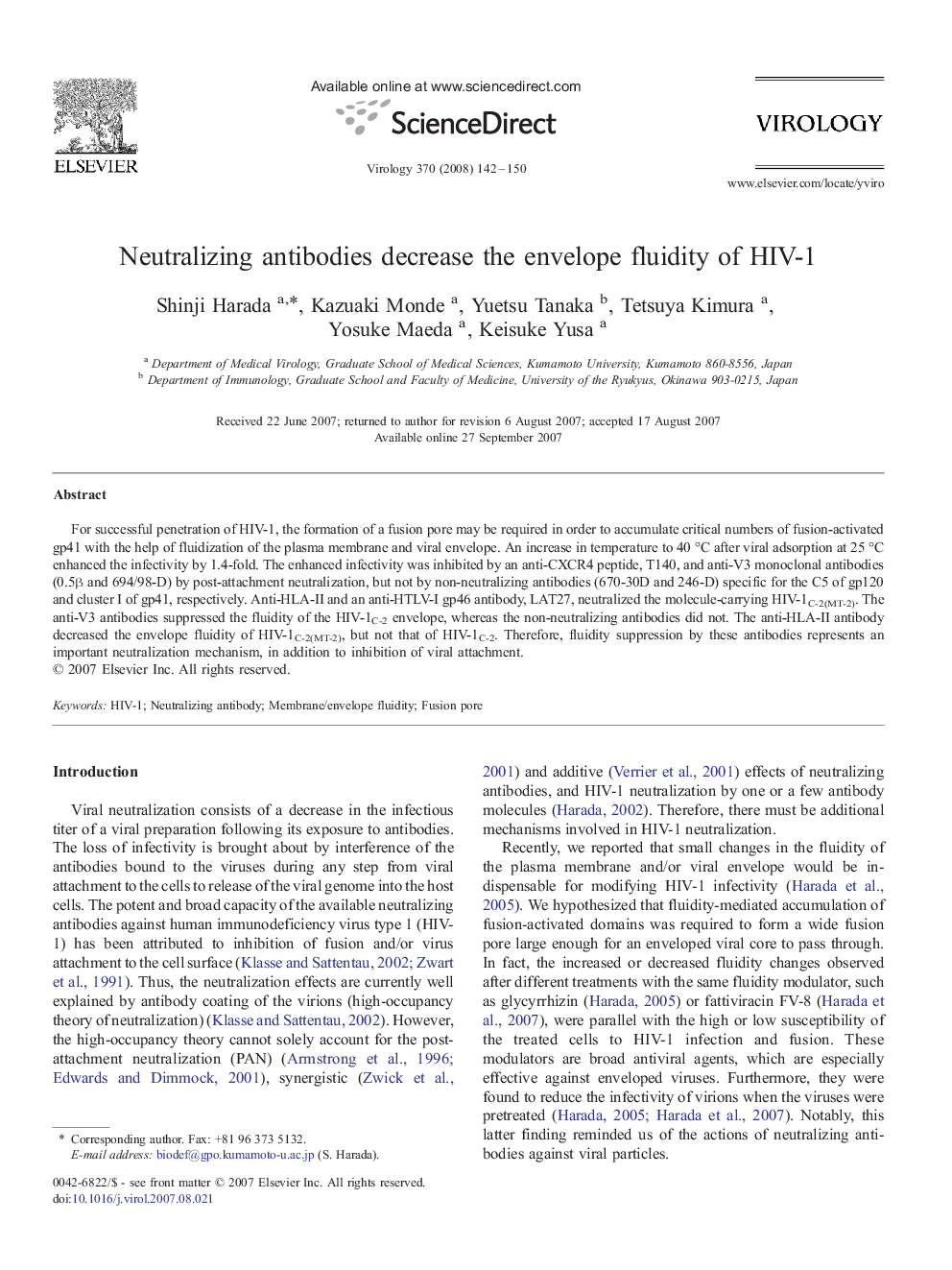| کد مقاله | کد نشریه | سال انتشار | مقاله انگلیسی | نسخه تمام متن |
|---|---|---|---|---|
| 3427128 | 1227365 | 2008 | 9 صفحه PDF | دانلود رایگان |

For successful penetration of HIV-1, the formation of a fusion pore may be required in order to accumulate critical numbers of fusion-activated gp41 with the help of fluidization of the plasma membrane and viral envelope. An increase in temperature to 40 °C after viral adsorption at 25 °C enhanced the infectivity by 1.4-fold. The enhanced infectivity was inhibited by an anti-CXCR4 peptide, T140, and anti-V3 monoclonal antibodies (0.5β and 694/98-D) by post-attachment neutralization, but not by non-neutralizing antibodies (670-30D and 246-D) specific for the C5 of gp120 and cluster I of gp41, respectively. Anti-HLA-II and an anti-HTLV-I gp46 antibody, LAT27, neutralized the molecule-carrying HIV-1C-2(MT-2). The anti-V3 antibodies suppressed the fluidity of the HIV-1C-2 envelope, whereas the non-neutralizing antibodies did not. The anti-HLA-II antibody decreased the envelope fluidity of HIV-1C-2(MT-2), but not that of HIV-1C-2. Therefore, fluidity suppression by these antibodies represents an important neutralization mechanism, in addition to inhibition of viral attachment.
Journal: Virology - Volume 370, Issue 1, 5 January 2008, Pages 142–150